mobile View, to the German Version tap the flag


- Palatinate
- historical landscape in Germany
- former county
- former electorate
- historical own name: Electoral County Palatinate of the Rhine
• Flags
• historical Flags
• Meaning/Origin of the Flag
• Coat of Arms
• Meaning/Origin of the Coat of Arms
• History
• Origin of the Country's Name
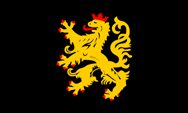
Flag of Palatinate – traditional,
Source, by:
Wikipedia (EN),
World Statesmen




Colours of the country




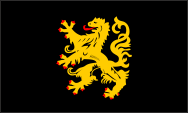
1155–1214(?),
Flag of Palatinate



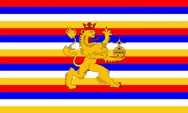
16th cent.–17th cent.,
Flag of Electoral Palatinate,
Source: by:
Wikipedia (EN), following: Sir Iain, inspiration from User:Sodacan [CC BY-SA 3.0], via Wikimedia Commons and pfalz-fahne.de: Finanzrat a.D. Wilkens in "Das Bayernland" Nr. 48, 1910



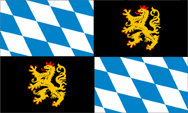
1776–1789,
alleged flag of Palatinate as part of Bavaria,
Source: by: World Statesmen



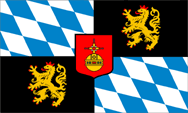
1776–1789,
alleged flag of Palatinate as part of Bavaria with imperial orb (rank of Archidapifer)




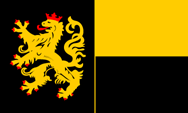
The revitalized flag of Palatinate,
more Info here
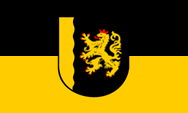
since 1986,
Flag of the today's Association of the Districts of Palatinate,
Source: by:
Flags of the World




In the middle ages, the use of flags as we know them today was not common. The identification of the individual was no longer carried out via the tribe and not yet via the nation, but via the person of the feudal lord, who indicated his presence via banners, which had been designed as escutcheon-flags. The image of the coat of arms was transferred to the bunting. This can be assumed from the old Palatinate, with the golden lion on black. After the Palatinate came to the House of Wittelsbach (1214), the coat of arms of the Palatinate was supplemented in square with the Wittelsbach lozenges from around 1242. From 1329 the Palatinate (Rheinpfalz) was administratively separated from Bavaria as an electorate under a separate line of the House of Wittelsbach. The quartered coat of arms 'Palatinate-Wittelsbach' was still used. Whether also on flags is not certain, but to be assumed. After the death of Elector Ruprecht III. (1410) the Palatinate splited into numerous familiy lines, at times (1623) even the electoral dignity was lost to Bavaria. Bavaria also used the coat of arms 'Palatinate-Wittelsbach', because in 1214 the Upper Palatinate also came to Bavaria, which remained to Bavaria from 1329 until today. The ongoing claims of the Bavarian Wittelsbachers to the electoral dignity were represented on the Bavarian coat of arms in this way too. The combination 'Palatinate-Wittelsbach' also appeared on the personal banners of the Bavarian monarchs, and the blue and white diamonds on all other Bavarian flags, and from the 17th century also blue and white stripes. The electoral dignity was lost again by Palatinate in 1742 and was transferred again to Bavaria. The ongoing dispute ended when the Bavarian Wittelsbachers died out in 1776 and whole Bavaria and its electoral dignity came to the Palatinate. From that year the Palatinate was reunited with Bavaria. Some sources indicate that from this point in time a quartered Palatinate-Wittelsbach flag was used, which was supplemented with the Erzamt's coat of arms of the electoral dignity as required and by expenditure. This title of elector was associated with the Erzamt of the Archidapifer (German: Erztruchsess): golden imperial orb in a red field. In reality, they are likely to be the flags of the duke and of the elector of Bavaria, which were also used in the Palatinate. In 1793 the Palatinate on the left bank of the Rhine was annexed by France, and in 1803 the Palatinate regions on the right bank of the Rhine were transferred to Baden and Hesse-Darmstadt. Not until 1815, at the Congress of Vienna, (only) the areas on the left bank of the Rhine came back to Bavaria. In 1919 territories of the Palatinate had to be ceded to the Saar Area, and in 1947 the Palatinate was separated from Bavaria by resolution of the Allies and became a part of the new state of Rhineland-Palatinate.
The flag of the old Palatinate, which is often used today for traditional purposes, shows the coat of arms of the 12th century, the golden lion on black. It goes back to the Salier family (1024–1125 German kings and emperors), from whose possessions the Palatinate of Rhine was formed in 1155. It showed a golden red armored erected (rampant) lion on black. The red crown, which is ubiquitous today, was added not until the 14th century. If the colours of the country (derived from the colours of the coat of arms) are in use as a horizontally striped flag, the stripes have to be arranged in the heraldic correct sequence, gold over black.
For the Electoral Palatinate (Kurpfalz), a flag from the 16th and 17th centuries is handed down. It was first mentioned in 1604 and showed 16 horizontal stripes, in them four times the sequence of the colors red, blue, white and yellow, and in the middle of the flag a red armed, golden lion, whose right paw holds the the Imperial Orb (Rank of Archtrustess). The lion looks away from the flagpole – contrary to the rules. The sequence of stripes varied over time. White and blue are the colours of the Bavarian dynasty of Wittelsbach, who ruled the country since 1776. Red and yellow were then called "colours of Palatinate" which goes back to the dignity of the Archtrustess bestowed to the Elector in 1544, the symbol of that dignity was the golden imperial apple in a red field, a symbol that at that time was quite equal to the lion's coat of arms of Palatinate.
Source: Flaggen Enzyklopädie,
Snamjena Germanii,
Wikipedia (EN),
Bayernland Nr. 48 von 1910


12th century,
Coat of arms of Palatinate,
Source, by: Wikipedia (DE)

13th to 14th century,
Coat of arms of Palatinate,
Source, by: Wikipedia (EN)

14th to 18th century,
Coat of arms of the Electoral Palatinate,
Source, by: Wikipedia (EN)

Heraldic image of Palatinate,
Source, by: Wikipedia (EN)

The coat of arms of Palatinate goes back to the Salier family (1024–1125 German kings and emperors), from whose possessions the Palatinate of Rhine was formed in 1155. It originally showed a red armored golden erected (rampant) lion on black. The red crown was added not until the 14th century. This practice probably goes back to the function of the elector as the imperial vicar, which was passed on to him with the Golden Bull of 1356.
Source: Wikipedia (DE)

1155 · establishment of the Palatinate County of Rhine in the valley of Rhine River from former possessions of the Salier dynasty
1214 · Palatinate becomes a fiefdom of the House of Wittelsbach
1266 · purchase of the Bavarian Northern Gau (Upper Palatinate) by duke Ludvig II.
1288 · purchase of Heidelberg by duke Ludvig II.
1329 · separation of Rhine-Palatinate from Bavaria, earning of the electoral dignity by Ruprecht I. (Electorate of Palatinate), later purchase of Zweibruecken, Mosbach and Simmern
1410 · death of Ruprecht III.
15th/18th century · legacy partitions, later vanish of the main lineage of Palatinate, arise of the Houses of Palatinate-Zweibruecken, Palatinate-Simmern, Palatinate-Neuburg, Palatinate-Birkenfeld, Palatinate-Sulzbach, temporary loss of the electoral dignity to Bavaria
1614 · purchase of Juelich and Berg
1742 · vanish of the lineage of Palatinate-Zweibruecken-Neuburg, loss of the electoral dignity
1776 · heritage of the Electorate of Bavaria, unification of Bavaria and Palatinate
1793–1814 · the left of River Rhine placed areas are annexed by France
1803 · German Mediatisation (Reichsdeputationshauptschluss), transformation of the territorial partition of the German Empire, the right of River Rhine placed areas become annexed to Baden and Hesse-Darmstadt
1814–1815 · Vienna Congress, reorganization of Europe after the Napoleonic era, the left of River Rhine placed areas come to Bavaria
1816 · establishment of the Bavarian administrative district of Palatinate
1919 · loss of territories to Saar Area
1934 · the territorial countries' structure of the German Empire becomes detached by the Gau's of the NSDAP, the countries become insignificant
30th of August 1947 · by order of the allies the country Rhineland-Palatinate was formed from the southern part of the Prussian Rhine Province, the till there Bavarian Palatinate and western rhenish territories of Hesse (Rhine Hesse)
Source: Atlas zur Geschichte,
Wikipedia (D),
Meyers Konversationslexikon,
Discovery '97,
Volker Preuß

The early and high medieval German king- and emperorship was a traveling king- and emperorship. Lack of a capital the ruler had to show himself in personal presence in all parts of the empire. Befitting he lived in a palace (Latin: Palatium = Palatinate = German: Pfalz, the surrounding area of the Palatinate, its lands, were called "Palatinus"). These palaces were therefore spread throughout the whole empire. The financing of the palaces was often incumbent half of each part of the surrounding country and of the emperor. With this is revealed the medieval material law, where it was not enough to get or to have a specific title, by election or inherit, no, you had to be in imperative possession of the corresponding castle or estate, and also had to have the appropriate insignia (as king/emperor: crown, scepter, orb, holy lance, imperial sword etc). If you had those insignia – next to the title as king/ emperor – those were firmly and securely stored (for example, Trifels Castle or Nuremberg). They were not taken on trips. The king/emperor could elevate the managers of such palatinates to a Count, a so called Count Palatine (Pfalzgraf). Some of these Counts Palatine could significantly increase the lands of their palatinate by acquisitions and became very powerful. The most powerful was the "Count Palatine of the Rhine", which was even one of the seven electors. His considerable land became the "Pfalz", a tract of land, as we know it until today. The titles of the Counts Palatine were maintained partly long, even up to the times when no palatinates were needed anymore. This traveling kingshipwas was less pronounced in the other European countries, nevertheless it was also expected that the king sometimes stayed in other parts of the country and not only resided in the respective capital. As the King of Poland became the patron of the Free City of Danzig (Gdansk) it was conceded to him by the Danzig patricians the right to have an own inn within the City of Danzig, to live there - at his own expense - when he will come to Danzig. Likewise is it until today expected, that the british Queen lives at least once in a year under their Scottish subjects (usually at Château Balmoral) in her function as Queen of Scotland.
Source: Jürgen Kaltschmitt


Holy Roman Empire of German Nation

Federal Republic of Germany

![]()



























